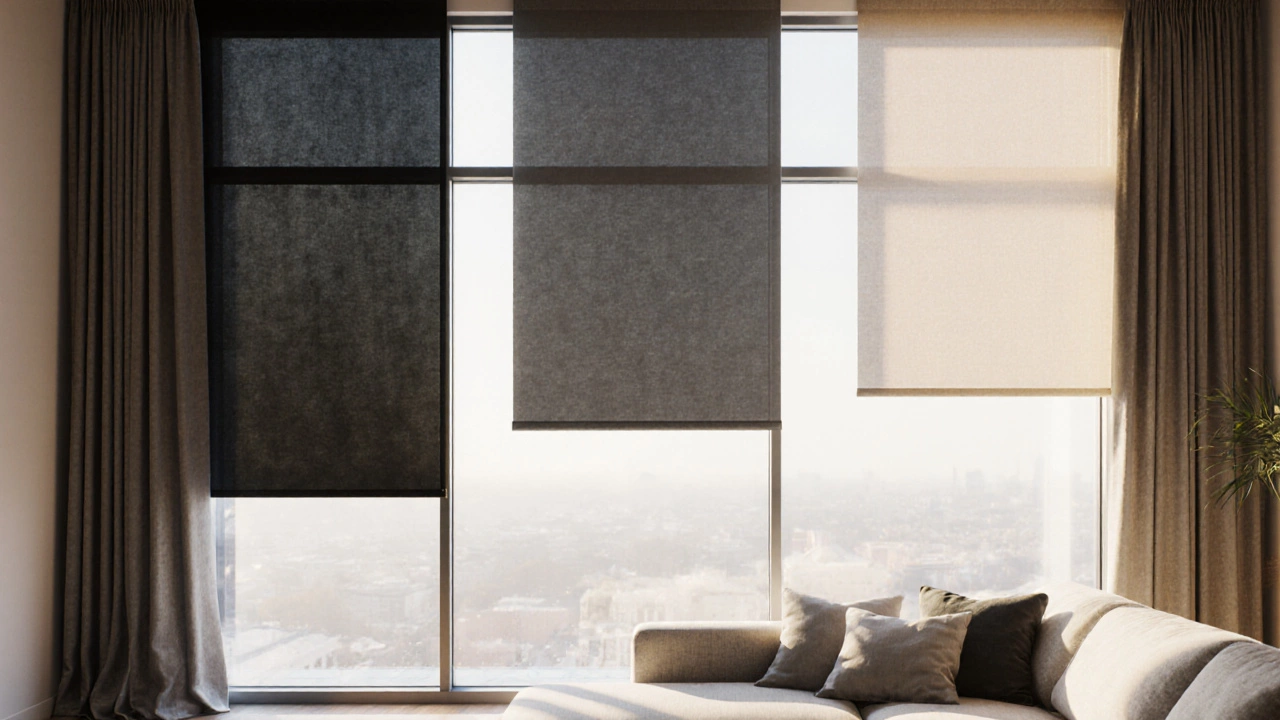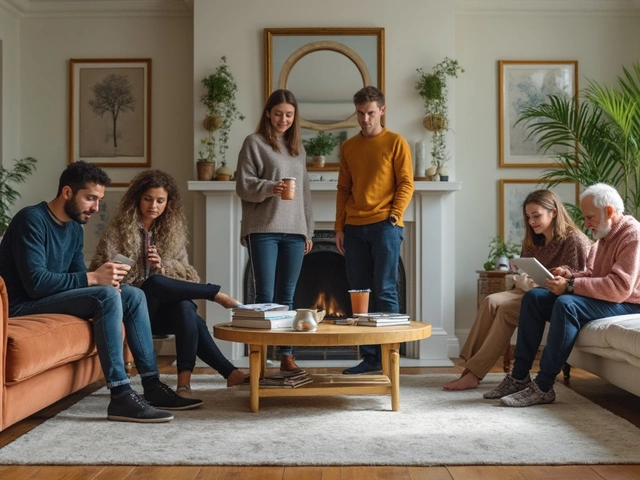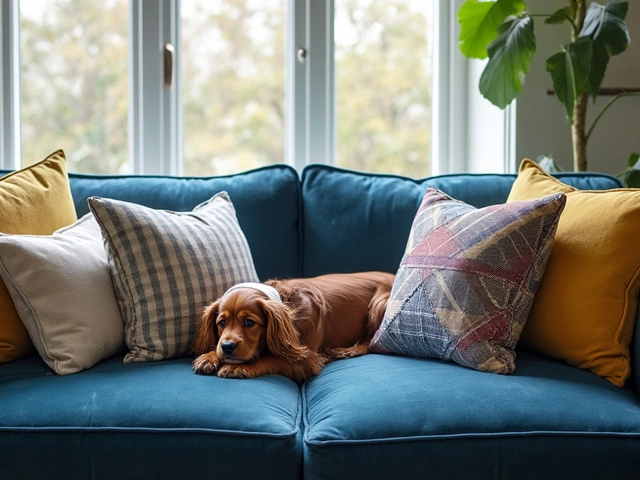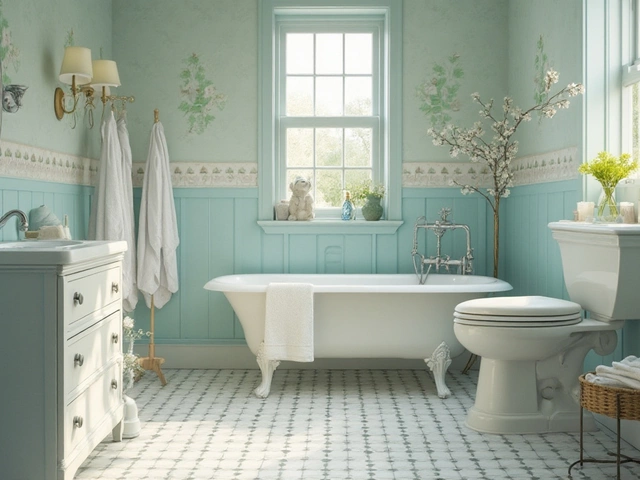Curtain Light Blocking Calculator
Calculate Your Curtain's Light Blocking Effectiveness
Select your curtain color and fabric type to estimate how much sunlight you'll block.
Light Blocking Guide
Dark Colors Block More Sunlight
Darker colors absorb more light than lighter ones. Jet Black curtains block up to 95% of sunlight, while white curtains only block about 35-45%.
Fabric Matters
Fabric weight and weave affect light blocking. Heavier fabrics (300-400 g/m²) with tight weaves block more light than thin, loosely woven materials.
% of Sunlight Blocked
or 0% of light passing through
Recommended Use Cases
Ever wonder which color curtains stop sunlight and keep your rooms comfortable? The answer isn’t just “pick the darkest shade.” It’s a mix of color physics, fabric heft, and smart styling. Below you’ll find a step‑by‑step guide that tells you exactly what hue to choose, why it works, and how to blend function with looks so you never have to sacrifice style for shade.
Why Color Matters for Light Blocking
Curtains are more than a decorative layer; they act as a filter between sunlight, the sun’s bright rays, and your interior space. Darker colors have higher absorption rates, meaning they turn more incoming light into heat rather than letting it pass through. Lighter shades reflect light, sending a larger portion straight into the room.
In practical terms, a navy or charcoal curtain can cut the visible light entering a room by up to 80%, while a pastel beige might only block 20‑30%. The degree of blockage also hinges on the fabric density, weave, and any added linings.
Top Colors That Stop Sunlight
Here’s a quick rundown of the hues that consistently deliver the best light‑blocking performance. The percentages are average values sourced from independent textile tests conducted in 2024.
| Color | Typical Light Transmission | Best For |
|---|---|---|
| Jet Black | 5‑10% | Home theatres, bedrooms |
| Charcoal Gray | 10‑15% | Living rooms, office spaces |
| Deep Navy | 12‑18% | Coastal homes, modern interiors |
| Dark Brown (Espresso) | 15‑20% | Traditional décor, rustic rooms |
| Rich Burgundy | 18‑25% | Luxury suites, dining areas |
| Mid‑tone Olive | 22‑30% | Eco‑friendly spaces, earth‑tone schemes |
| Soft Beige | 35‑45% | Sun‑lit kitchens, bright parlors |
| Pure White | 55‑65% | Minimalist spaces, where daylight > privacy |
Notice that even the darkest colors rarely get below 5% transmission unless you add a dedicated blackout lining. That extra layer makes the biggest difference.
Fabric Types and Weave: The Hidden Heroes
Color is only one piece of the puzzle. The following fabric characteristics amplify a hue’s blocking power:
- Thickness: Heavier fabrics naturally block more light. Look for a weight of 300‑400g/m² for good results.
- Weave density: Tightly woven materials (e.g., high‑thread‑count polyester or cotton) reduce gaps where light can leak.
- Blackout lining: A separate polyester backing coated with a light‑absorbing layer can push transmission down to 1‑5% regardless of color.
- Opacity rating: Many manufacturers list an "opacity" percentage; aim for 85%+ for serious sunlight control.
When you pair a dark color with a blackout lining, you get the best of both worlds: visual privacy and superior energy performance.
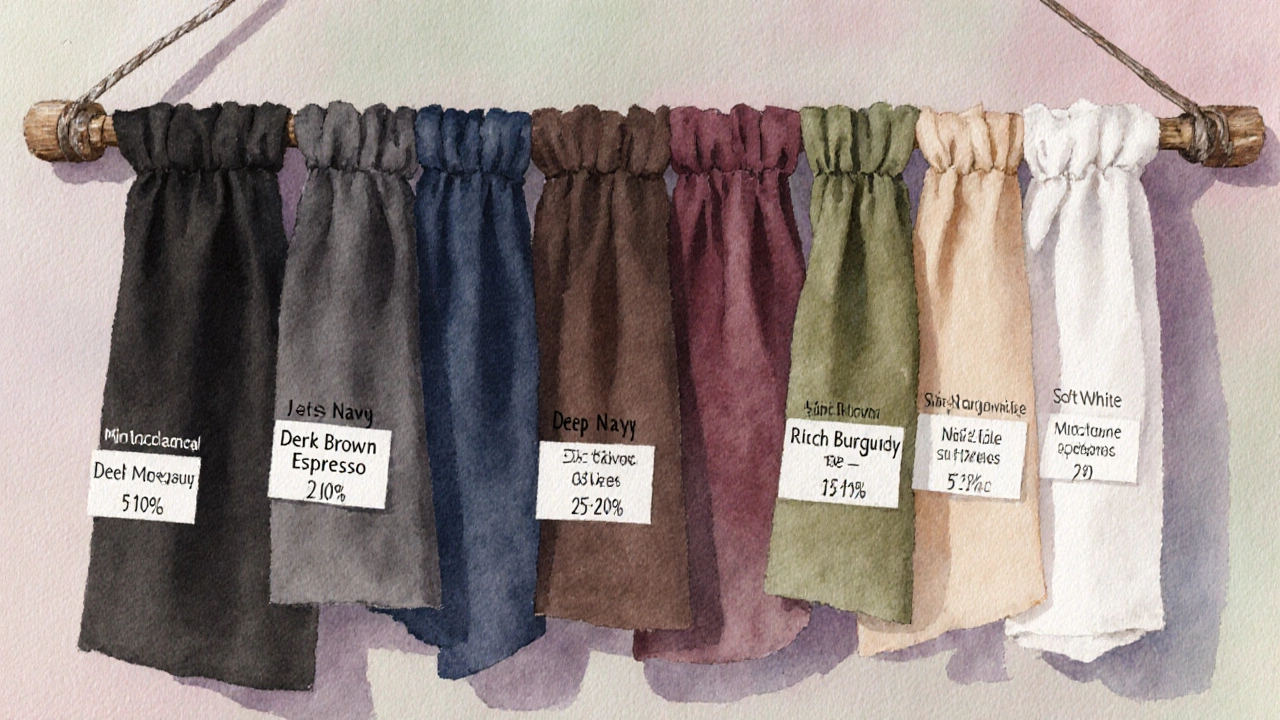
Energy Benefits: Less Sunlight, Lower Bills
Blocking sunlight isn’t just about comfort-it directly impacts your room temperature and energy efficiency. In summer, a room that receives 70% less solar gain can stay up to 5°C cooler, cutting air‑conditioning use by roughly 15‑20%. In winter, however, you might want a balance: a dark curtain that blocks heat loss at night but can be opened or layered with sheer curtains to let in the low‑angle sun during the day.
Studies from the New Zealand Home Building Council (2023) show that homes using dark, blackout‑lined curtains saved an average of NZ$120 per year on electricity. That saving rises to NZ$200 in sunny Wellington suburbs where sunlight hours average 6.5 per day during summer.
Choosing the Right Color for Each Room
Beyond pure blocking, think about the room’s purpose and mood:
- Bedrooms: Jet black or charcoal gray blackout curtains create a true night‑time environment, perfect for shift workers or kids.
- Living rooms: Deep navy or dark brown offers strong blockage while still feeling cozy. Pair with lighter tie‑backs to keep the space from feeling too heavy.
- Home offices: A mid‑tone olive reduces glare on screens without making the room feel claustrophobic.
- Kitchens & dining areas: Rich burgundy adds warmth but still caps direct glare from windows above the sink.
- Sunrooms or conservatories: If you want occasional sun, opt for a darker hue with a removable sheer overlay that you can slide aside on cool days.
Remember that home decor trends favor layered looks. A dark base curtain topped with a light, patterned sheer panel gives you privacy when needed and a soft glow when you pull the sheer back.
Installation Tips to Maximize Light Blocking
- Mount the rod a few inches wider than the window frame; this prevents light from sneaking around the edges.
- Hang curtains close to the ceiling. The higher they sit, the more wall space they cover, reducing side glare.
- Use a double‑pole rod: one pole for the main dark curtain, another for a sheer or decorative overlay.
- Seal the top of the curtain with a valance or magnetic tape if you have a very bright sunroom.
- Choose curtains with a thermal backing if you live in a region with extreme temperature swings.
These small adjustments can boost a dark curtain’s effective blockage by an additional 5‑10%.
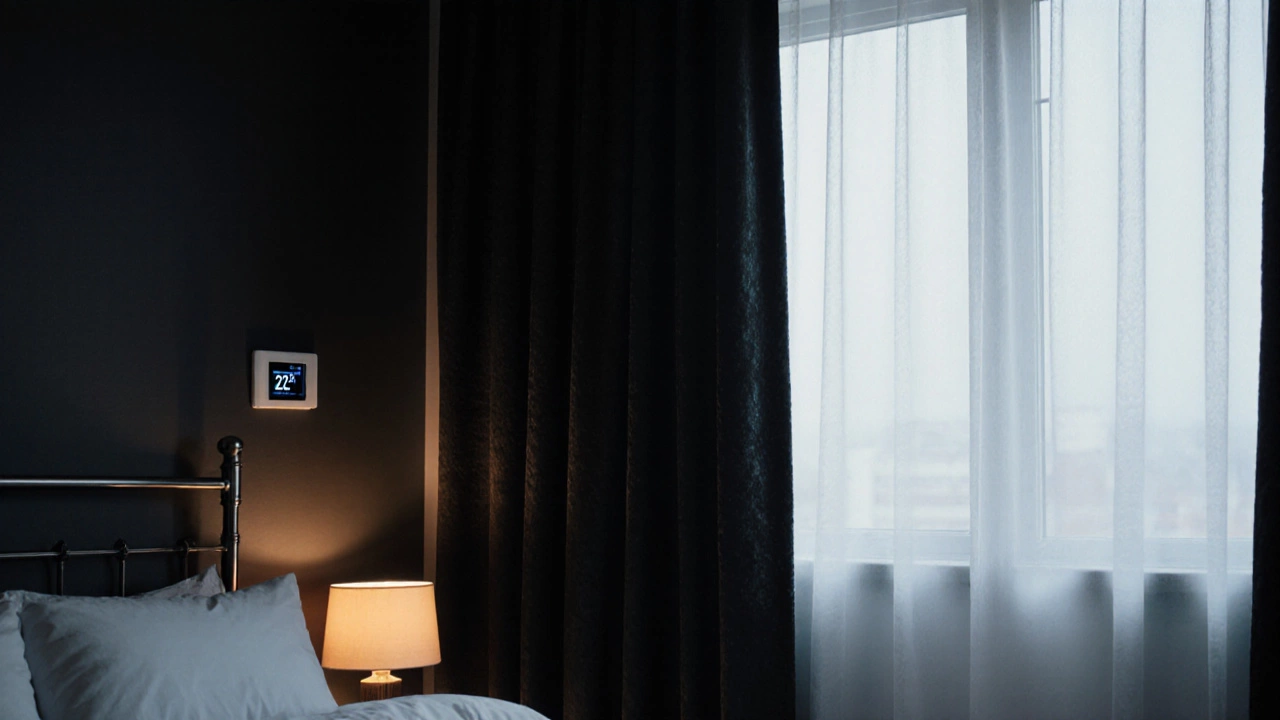
Common Mistakes and How to Avoid Them
Even with the right color, many people end up with light leaks:
- Skipping the blackout lining: A dark hue without a backing can still let 20‑30% of light through.
- Choosing too thin a fabric: Thin polyester looks sleek but often has high light transmission.
- Ignoring edges: Light pours in around the sides if the curtain width is less than the window’s width plus 6‑8 inches.
- Matching color to wall without considering function: Dark walls + dark curtains look dramatic but may make a small room feel cramped.
Address each point during shopping and installation for a truly shady result.
Quick Checklist for Sun‑Blocking Curtains
- Pick a dark color (black, charcoal, navy, deep brown).
- Ensure fabric weight≥300g/m² and tight weave.
- Add a blackout lining or choose pre‑lined blackout curtains.
- Mount rod 2‑4inches beyond the window frame.
- Layer with a sheer if you want occasional daylight.
Frequently Asked Questions
Do dark curtains make a room feel smaller?
A dark hue can visually shrink a space if it dominates the wall surface. Balance it with light tie‑backs, a bright rug, or a contrasting ceiling paint to keep the room feeling open.
Can I use a light color if I add a blackout liner?
Yes. A high‑quality blackout liner can reduce transmission to under 5% regardless of the outer fabric’s color. This is a good option for rooms where you love bright décor but need night‑time privacy.
How does curtain color affect heat gain in summer?
Dark colors absorb more solar energy, turning light into heat. When paired with a blackout backing, most of that heat stays trapped within the fabric, preventing it from entering the room. This can lower indoor temperatures by up to 5°C compared with light‑colored curtains.
Is there a eco‑friendly dark curtain option?
Look for curtains made from organic cotton or bamboo with a recycled polyester blackout layer. Dark indigo or charcoal shades are available in these sustainable fabrics, giving you both environmental points and light blocking.
How often should I clean blackout curtains?
Most synthetic blackout fabrics can be machine‑washed on a gentle cycle every 3‑4 months. Spot‑clean stains promptly to avoid buildup, and tumble‑dry on low to maintain the lining’s reflective coating.

